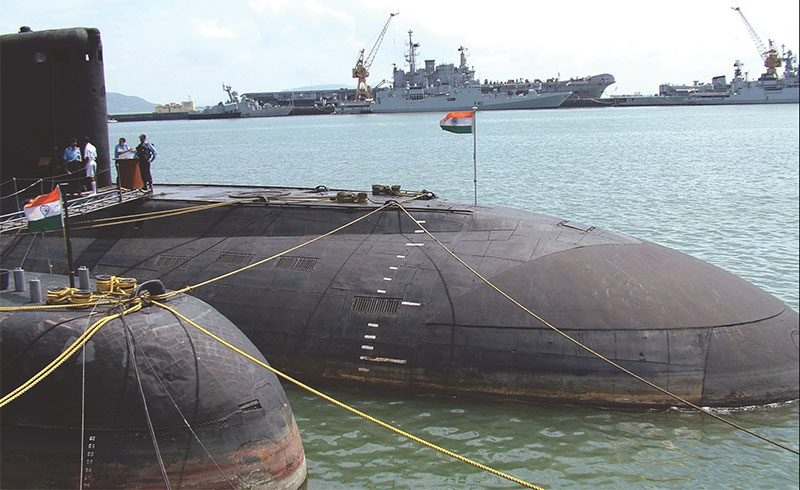India’s sub-sea fleet needs an overhaul
Rohan Ramesh
The rise in tensions between India and Pakistan, and consequent reports that the Indian Navy went on war readiness mode post-Pulwama has once again focused attention on the need to beef up the naval arm of Indian armed forces. Reports said the navy, which was conducting its biggest war games ever, TROPEX 19 (Theatre Level Operational Readiness Exercise) off Kochi, quickly redeployed the carrier battle group comprising INS Vikramaditya, nuclear submarines and scores of other ships, submarines and aircraft, as tensions escalated.

While the limelight has been on the army and the air force for four wars over 70 years, the navy, which played a small, but effective role in the 1971 war, has been a neglected child for long. Being a status quoist power, India in the past never considered a substantial role for the navy. There were two reasons behind this. One, the Pakistan navy was a smaller fry in Rawalpindi’s scheme of things. Second, China was more concerned with economic growth, and its security concerns related to South China Sea and the US Pacific Command.
The Indian Navy played an active role twice, once while smashing a coup by Sri Lankan Tamil mercenaries in Maldives in November 1988 and later providing support to the Indian Peace Keeping Force (IPKF) as it took on the Liberation Tigers of Tamil Eelam (LTTE) in Sri Lanka, in an ill-advised mission between 1987 and 1990.
For decades, the navy had the vast Indian Ocean all by itself. But things changed in the last few years.
The rise of China as a world economic power, and its consequent power play with the US had unexpected consequences. Anticipating an inevitable conflict with the US, the Chinese leadership began feverishly beefing its armed forces, and that included its navy. Fearing American interdiction and disruption of its energy supply lines stretching from the Gulf via Malacca Straits to the industrial hubs in eastern China, Beijing has begun building its navy into a powerful offensive force. And it has been looking for bases or friendly support and logistical infrastructure in the Indian Ocean, ranging from Myanmar and Bangladesh in the east, Sri Lanka in deep south, to Pakistan in Arabian Ocean to Djibouti overlooking the Bab al-Mandab Strait.
And it has been beefing up navy, both its surface fleet, as well as sub-surface fleet. Beijing has also built a close security relationship with Pakistan, which poses a serious threat to India. Under the China Pakistan Economic Corridor (CPEC) project, Pakistan has virtually gifted its Gwadar port on the Makran coast to China, which the latter is rumoured to be turning into a naval base.
With American military aid to Pakistan drying up, China has stepped in, helping Pakistan armed forces with material, including naval destroyers, and even submarines.
The reported sighting of a Chinese sub in waters off Andamans, a first ever, is the warning that the Indian Navy needed - the Chinese could now be considering moving into the Indian Ocean, which the Indian Navy had so far considered its backyard.
Together, the Chinese and Pakistan navies have the potential of being a joint threat, if not now, in the foreseeable future.
Given the scenario, in the event of further escalation of tensions, submarines will play a key part in Indian strategic planning, both as a conventional deterrent, or a strategic force as part of the nuclear triad.
The current submarine fleet of the Indian Navy has four Shishumar class submarines procured from Germany in the Eighties and Nineties. The four submarines in service are INS Shishumar (S44), INS Shankush (S45), INS Shalki (S46), INS Shankul (S47). These Type 209 submarines were designed by the German shipyard Howaldtswerke-Deutsche Werft (HDW) for the Indian Navy.
You must be logged in to view this content.

